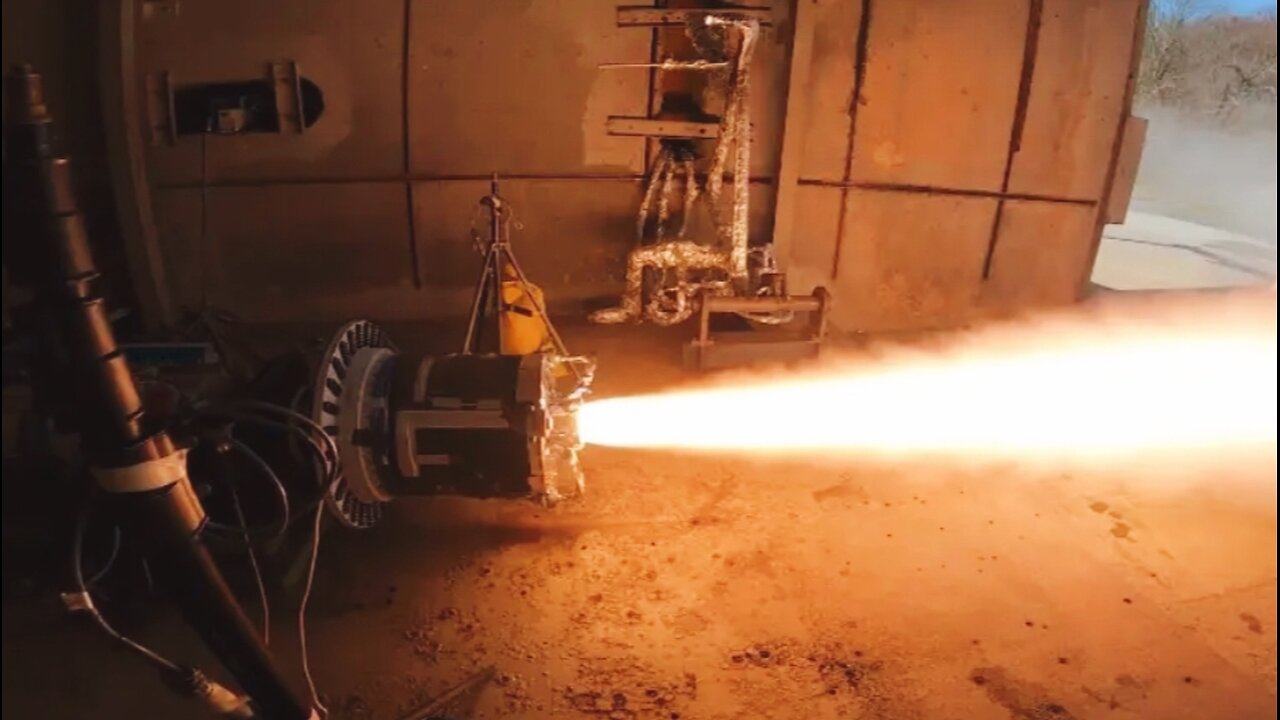Premium Only Content

NASA Mars Ascent Vehicle Continues Progress Toward Mars Sample Return
To test the solid rocket motor designs, the MAV team prepared development motors. This allowed the team to see how the motors will perform and if any adjustments should be made before they are built for the mission. The SRM2 development motor was tested on March 29, 2023, at the Northrop Grumman facility in Elkton, Maryland. Then, SRM1’s development motor was tested on April 7 at Edwards Air Force Base in California.
SRM1’s test was conducted in a vacuum chamber that was cooled to minus-20 degrees Celsius (minus-4 degrees Fahrenheit) and allowed the team to also test a supersonic splitline nozzle, part of SRM1’s thrust vector control system. Most gimballing solid rocket motor nozzles are designed in a way that can’t handle the extreme cold MAV will experience, so the Northrop Grumman team had to come up with something that could: a state-of-the-art trapped ball nozzle featuring a supersonic split line.
After testing and disassembling the SRM1 development motor, analysis showed the team’s ingenuity proved successful.
“This test demonstrates our nation has the capacity to develop a launch vehicle that can successfully be lightweight enough to get to Mars and robust enough to put a set of samples into orbit to bring back to Earth,” said MAV Propulsion Manager Benjamin Davis at NASA’s Marshall Space Flight Center in Huntsville, Alabama. “The hardware is telling us that our technology is ready to proceed with development.”
In fact, the supersonic splitline nozzle has achieved the sixth of nine technology readiness levels – known as TRL-6 -- developed by NASA. TRL-1 is the starting point at which there is just an idea for a new technology, while TRL-9 means the technology has been developed, tested, and successfully used for an in-space mission.
Davis said the supersonic splitline nozzle achieved TRL-6 through vacuum bench testing and full-scale hot fire testing in April. Results are being independently evaluated and will be confirmed in August.
The supersonic splitline nozzle will also undergo qualification testing to make sure it can handle the intense shaking and vibration of launch, the near vacuum of space, and the extreme heat and cold expected during MAV’s trip.
In addition to motor testing, the MAV team recently conducted its Preliminary Design Review, which was a four-day, in-depth review of MAV’s overall design. Mars Ascent Vehicle Project Manager Stephen Gaddis said MAV passed that review, which means the team can now focus on continuing to improve MAV before its Critical Design Review next summer.
NASA Marshall is designing, building, and testing MAV along with the project’s two primary contractors, Lockheed Martin Space and Northrop Grumman. Lockheed Martin Space is the overall system integrator and provides multiple subsystems, and Northrop Grumman provides the first stage and second stage main propulsion systems. The Mars Sample Return Program is managed by NASA’s Jet Propulsion Laboratory (JPL) in Southern California.
Learn more about the Mars Sample Return campaign.
-
 2:42:30
2:42:30
TimcastIRL
11 hours agoKash Patel CONFIRMED, Deep State PANICS, Mitch McConnell To RETIRE w/ Kevin Smith | Timcast IRL
186K336 -
 1:04:47
1:04:47
Candace Show Podcast
15 hours agoBecoming Brigitte: The Epilogue
131K173 -
 3:43:51
3:43:51
Alex Zedra
9 hours agoLIVE! Come Play WoT with me!
53.2K12 -
 5:22:49
5:22:49
Drew Hernandez
18 hours agoDOGE EXPOSES $2 BILLION SCHEME LINKED TO STACEY ABRAMS?!
80.1K70 -
 1:27:59
1:27:59
Kim Iversen
13 hours agoRFK Jr Declares No More Cheetos on Welfare? | Yale Confirms Long Covid Is Actually Vaccine Injury!
120K132 -
 1:08:43
1:08:43
The Charlie Kirk Show
10 hours agoTHOUGHTCRIME Ep. 74 — Charlie's Campus Return? Robo-Butlers? Garden of American Heroes?
100K19 -
 1:09:53
1:09:53
Slightly Offensive
10 hours ago $9.43 earnedIs the US Headed for MORE WAR Under TRUMP? | Guest: Scott Horton
61K14 -
 58:29
58:29
The StoneZONE with Roger Stone
10 hours agoRoger Stone Hails Confirmation of Kash Patel, Trashes Schiff for Attacks On Patel | The StoneZONE
67.1K21 -
 48:44
48:44
Man in America
15 hours agoA MASSIVE Global Financial Reset Is Coming—Are You Ready?
53.6K26 -
 1:15:42
1:15:42
Precision Rifle Network
1 day agoS4E5 Guns & Grub - The Best Rifle Under $2000
96.6K9